David Palumbo
Disclaimer:
Generally speaking, I think it’s pretty obvious that hiring models will give better results than using yourself: You can fine-tune posing, camera placement, and lighting as you work. You can compare the model with your sketch side by side and tweak posing very close to the original intent. You can see and react immediately. So I urge everyone to shoot models other than themselves when possible. That said, it’s amazing how often I end up shooting myself…
I don’t know how many of my own illustrations I’ve appeared in, but I think “more than half” is a reasonable opening guess. I prefer to cast myself for roles that I’m a natural fit for (bearded Caucasians) but, on occasion, I’ve been children, ogres, old men, and young women. I always play the monsters and dead bodies. Once I was Ryan Gosling.
Sometimes the right model isn’t available. Sometimes the deadline is too tight. Sometimes there’s just no budget and you need a dozen extras to fill out the scene. No matter what though, I shoot reference. Lucky for me, I’m always around and I work cheap.
Selfie-refs are something which has been discussed here before so I’m not going to go any more into the whys or whens. Most of you reading this are already intimately familiar with the practice. Instead, I want to give some tips for getting more out of the selfie-ref. If you take it seriously, you should be able to get results nearly as good as working with a proper model. I also don’t want to be redundant on general shooting tips, so these are very specifically about directing yourself.
1.Act it out.
In a room by myself, I have no time constraints, communication barriers, or inhibitions. Once camera, lights, and costume are all in order, I’ll put on some appropriate music and walk myself through the scene. The goal is to get in the head of the character and play the part. My posing will certainly be based on my sketch or thumbnails, but in a very fluid and organic sort of way. I often evolve aspects as I shoot and find ways to improve the original plan.
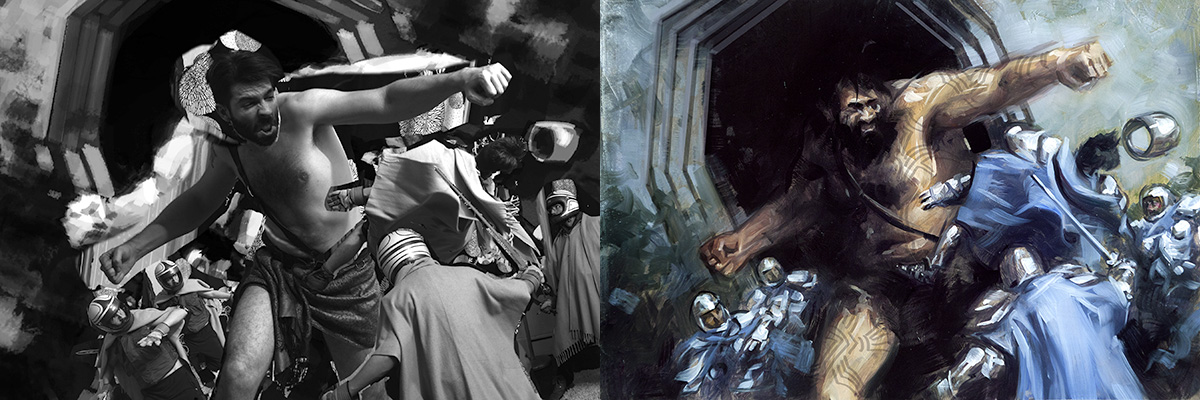 |
| from facial expressions to posture, I like to think about every character as an individual even in group scenes |
2. Use an intervalometer.
Most gear for selfie-refs are no different that a typical shoot, but there is one major exception: the intervalometer. This device plugs into your camera (some cameras even have a feature built in) and is programmed to fire the shutter at specific intervals of time. Most often, I set mine to shoot every four seconds. The advantage this gives over hitting the count down timer on every shot or using a remote is tremendous. For one thing, you can set yourself up into very complicated poses or situations which might take time to arrange. You also don’t have to find a way to work the remote without disturbing the pose. Most importantly, you don’t have to think about how many shots you’re taking. For me, that generally means I shoot way more and so I have more to choose from later. It’s easy to get into it and start improvising tweaks and trying new things beyond where you might have otherwise felt covered. If I have an awkward pose to figure out, I can take my time finding it as the shots fire away. If I have an inspiration, I can explore it as the shots fire away. Mostly I just focus myself into the scene and try to live that moment without having to think about hitting the button.
3. Get method.
Beyond just getting into the character’s head, sometimes I want to really get into their shoes. I’ve doused myself in water, climbed furniture, shot by candle light, and pushed myself to a real sweat with pre-shoot cardio all to better capture a sense of reality. If the reason that we shoot reference is to get new information that we would not have imagined, living the conditions of the scene can introduce some great details and idea.
4. Fixed camera set-ups.
Occasionally I might have a multi-character scene in which spatial relationships, perspective, and lighting are going to be a bit tricky. In these cases, I choose my lens very carefully to represent the angle of view I want and then act out the scene in real space. If the camera never moves, reassembling the reference is a snap.
5. Experiment.
I often set up and shoot through ideas when I’m stuck on a sketch. If the ideas all feel tired and done, it can really help jog new ideas to do the whole “act it out” thing in a very broad and loose way. I can try extreme angles and lighting and keep playing through it until something sparks.
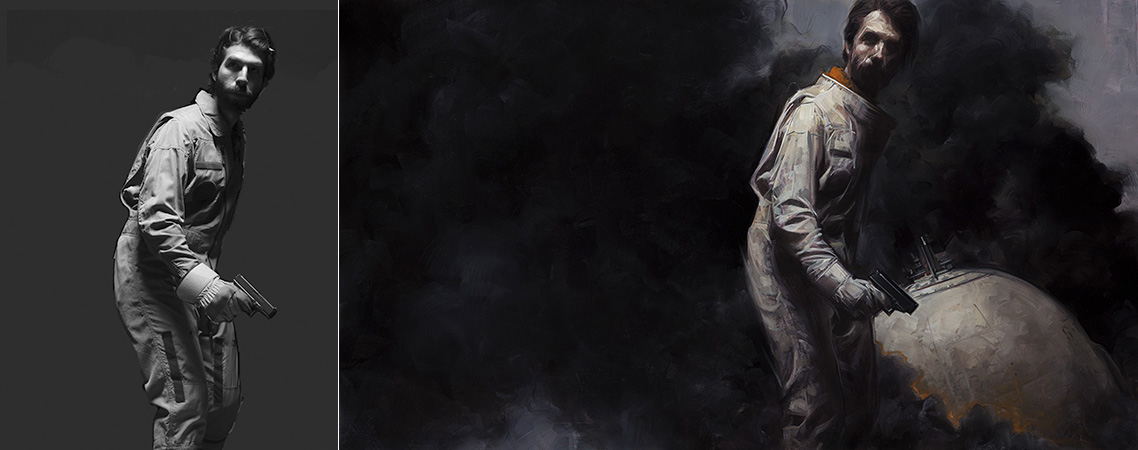 |
| I needed a piece to work on for an Art Out Loud demo but had nothing appropriate on deck, so I pulled out a costume, set up some dramatic light, and just goofed around until an idea emerged |
6. Face swapping.
One of the biggest challenges of shooting yourself often is making a very conscious effort to disguise yourself in the finished piece. General push and pull tricks for proportions and facial features usually do the trick, but occasionally I’ll find an image of an actor who looks right for the part and reference that more directly. Usually I’ll look at the celebrity photo for structural reference and my own shots for lighting. In those cases, the result tends to be nice and indistinct. There are times when a job demands it resemble a specific person though, in which case I‘ll hunt down or screen-cap my portraits first and design my lighting to match.
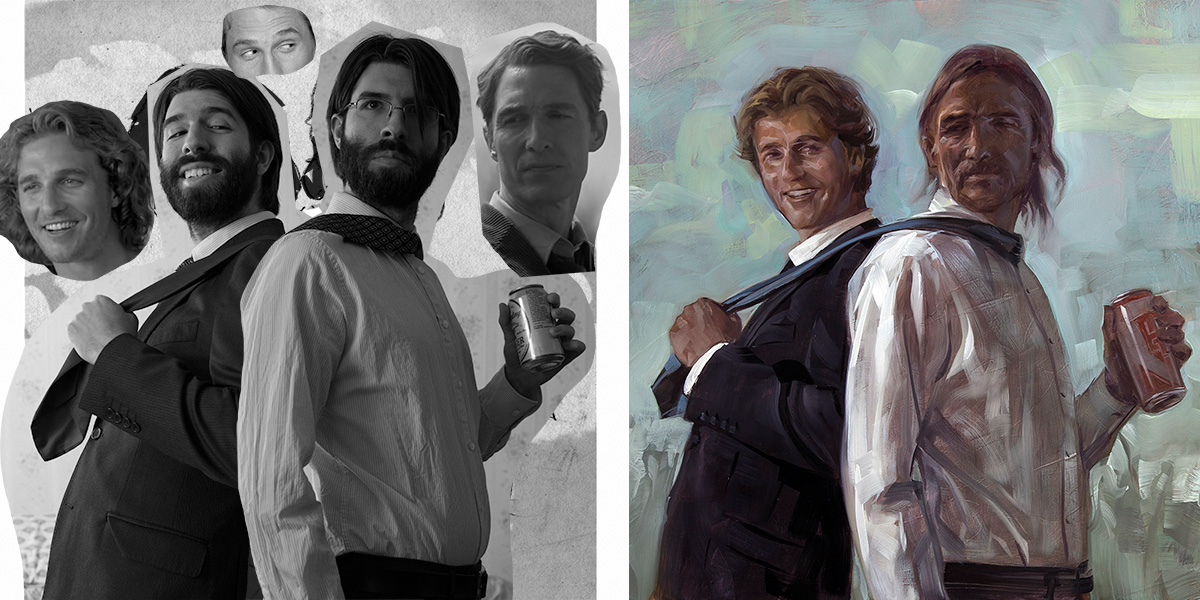 |
| honestly, I think this pretty much speaks for itself |
One last bit:
Though I’ve never found a method that I liked enough to use regularly, there are ways to monitor your shots as you take them. The most obvious is to place a mirror behind your camera. If you tilt it to sit parallel to the camera, it should match more or less what the camera is seeing. I’ve tried this but found it too awkward and misleading to be practical. The better solution would be to hook up a laptop or wireless device to your camera which shows the actual through-the-lens view live on a monitor. The times that I’ve tried this worked pretty well, though again it felt like the benefit was not worth the extra trouble. If I ever have to nail a very specific pose, however, it’s a good way to go.
I know that some folks like shooting video and pulling frames. I tend to avoid this because, though you do get a full range of motion on action poses, the resolution is pretty awful. If you don’t mind that, I’d keep my shutter speed at a minimum of 1/100 to avoid blurry shots (though this will often mean chasing a higher ISO and wider aperture than you probably want. Personally I just feel this method has too many compromises to the image quality. Good for sketching, bad for painting)


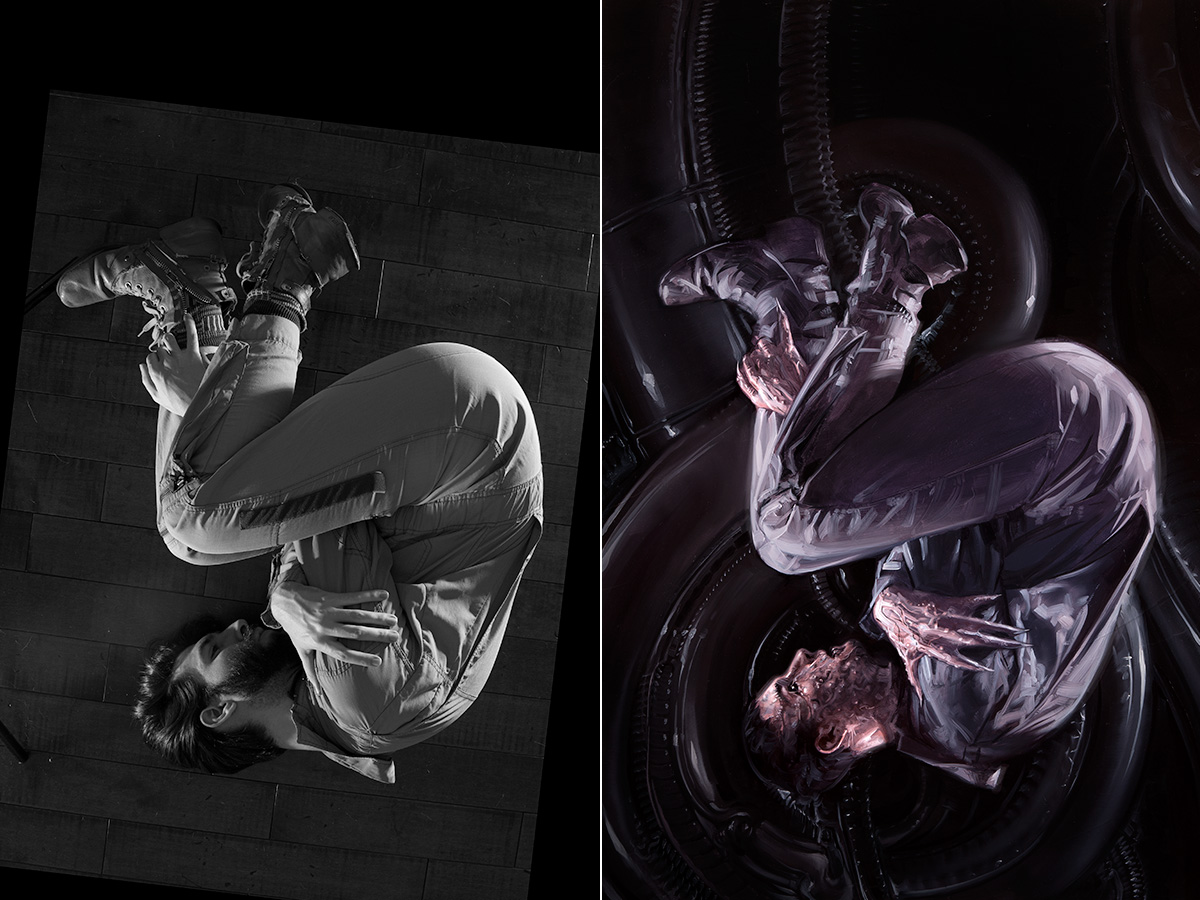
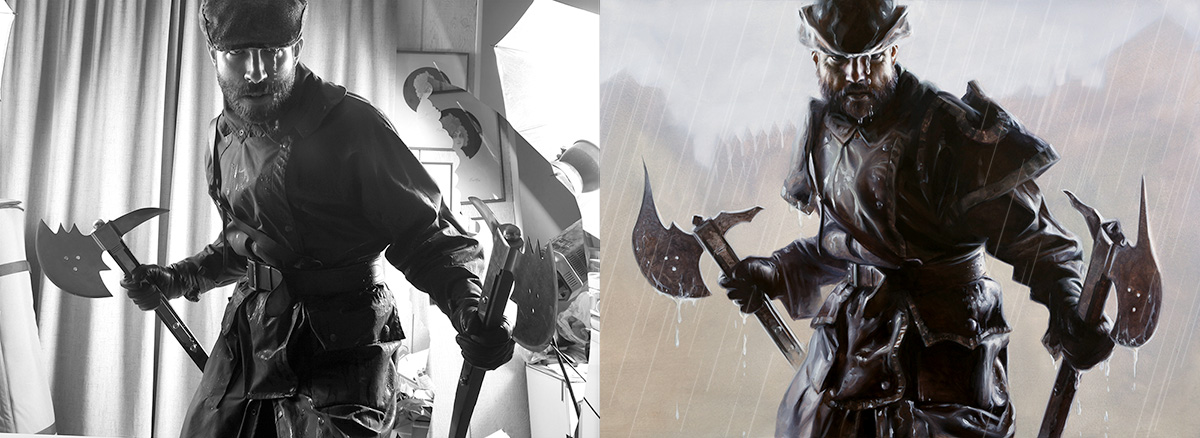
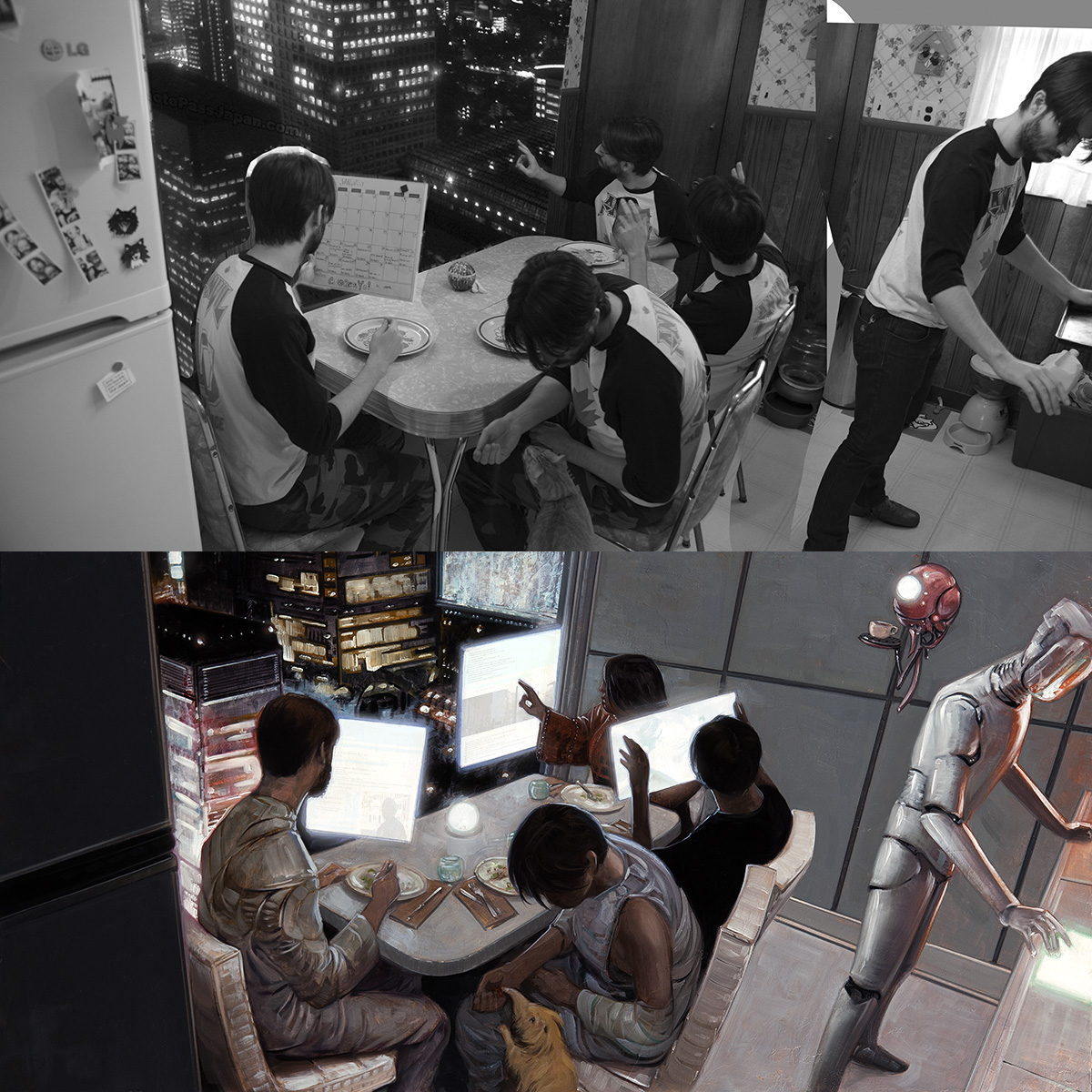
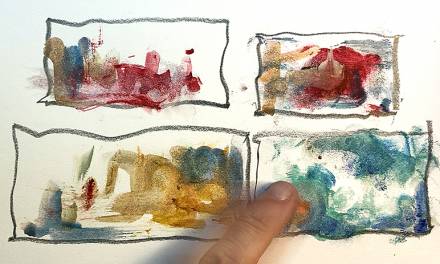
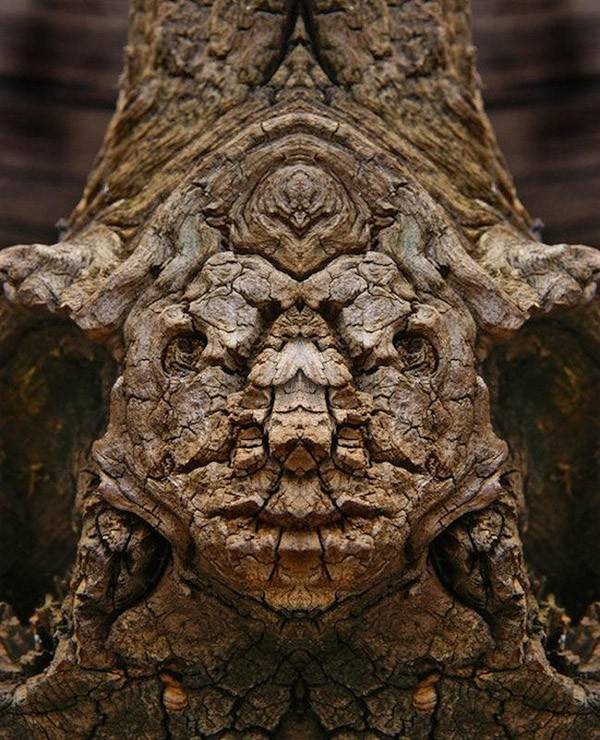
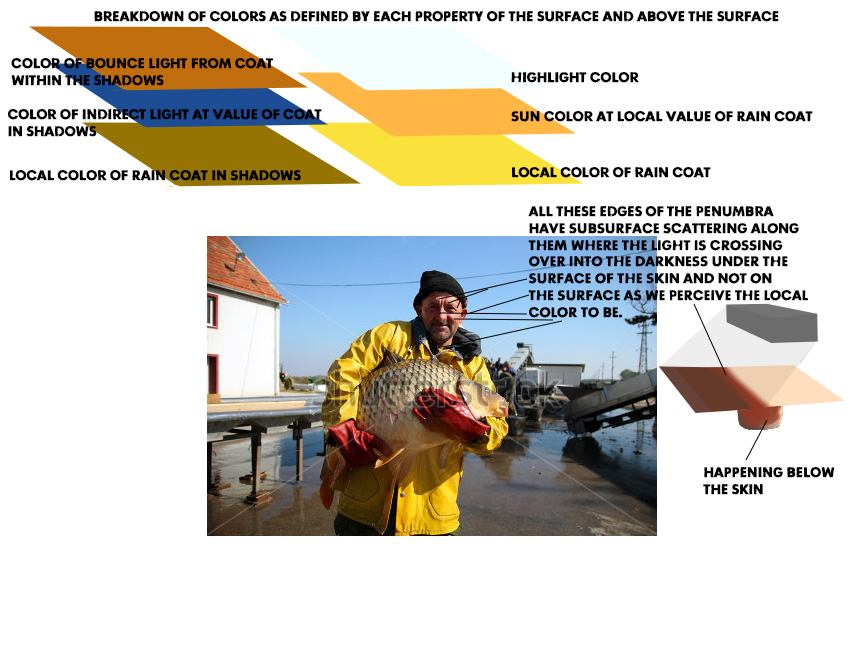
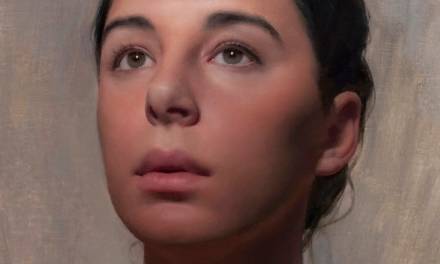
“I […] poured pots of water over my head every two or three shots so that I'd not only be soaked but dripping.”
Like method acting, but with reference photos.
Method is fun. Ive covered my wife in Homemade blood using a few things out of the kitchen. the mess was immense but worth it for the lighting on a fresh looking bloody body.
Was it ketchup?
Fantastic article!! Thank you so much for sharing your tips 😀
hats off for this article! I never even thought of going this far with shooting self reference. worlds of possibility just opened up. Big Thanks!
hats off for this article! I never even thought of going this far with shooting self reference. worlds of possibility just opened up. Big Thanks!
a combo of corn starch i believe and chocolate syrup, while avoiding food coloring cause it stains everything it touches. mixing water in to thin it out as needed for the different consistencies needed for the picture. super super messy
Awesome article as always!
I'm getting used to using much more reference. I've bought a few things to be able to hook my camera at any angle. It takes time to set up, but takes a lot less time in drawing and still end up with better work.
I also don’t want to be redundant on general shooting tips, so these are very specifically about directing yourself.
Selfie stick